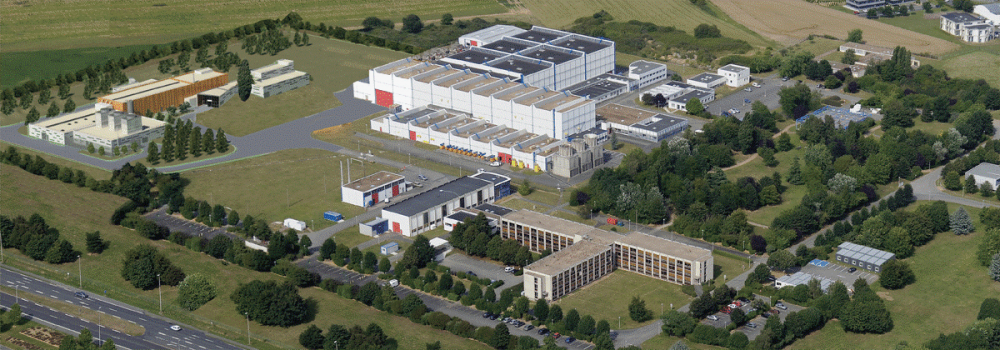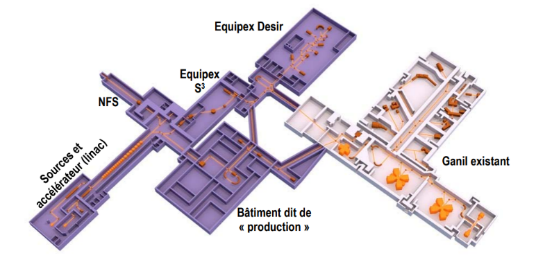On 23 June 2023, GANIL (Grand Accélérateur National d'Ions Lourds), one of the world's leading laboratories for research using ion beams, obtained building permission for the future DESIR experimental room, part-funded by an Equipex. The permit authorises the launch of construction work, starting with deep earthworks in July 2023, with the aim of taking delivery of the building in spring 2025. The first experiments are expected by 2027, providing the nuclear physics, fundamental interaction physics and nuclear astrophysics communities with a unique and internationally competitive research platform.
ince its commissioning and first experiment in 1983, Ganil's SPIRAL1 facility has been producing beams of light radioactive ions for the study of the physics of the nucleus, the atom, condensed matter, astrophysics, radiobiology, etc. Thanks to the unique nature of its facilities, Ganil is classed as one of the Very Large Research Infrastructures (TGIR), serving an international scientific community. The research carried out at the laboratory has led to major advances in nuclear physics. In order to remain at the heart of international competitiveness, Ganil has been working since 2005 on the construction of future experimental lines with the Spiral2 project, which will produce radioactive beams with masses ranging from the lightest to the heaviest nuclei at intensities never before achieved. In its first phase, the Spiral2 project includes the construction of a linear particle accelerator (linac) and three experimental rooms called NFS, S3 and DESIR.
DESIR (Decay, Excitation and Storage of Radioactive Ions) will be a so-called "low-energy" facility that will work with beam energies down to a few tens of keV and will use the SPIRAL1 and SPIRAL2 beams as well as the exotic nuclei produced by the S3 separator.
DESIR opens up new perspectives for GANIL and should eventually represent a major part of its scientific output in various areas of nuclear physics, physics of fundamental interactions and nuclear astrophysics. Its scientific programme is based on two key elements that make the DESIR facility a unique and highly competitive research platform on an international scale: firstly, the complementary nature of the studies that can be carried out using a variety of measurement techniques (laser spectroscopy, mass spectrometry, decay measurements and various measurements using ion traps); secondly, the very high optical quality and purity of the ion beams analysed by the DESIR separation tool sequence.
• Technological platforms › Development and integration platform for nuclear and particle physics
• GANIL





